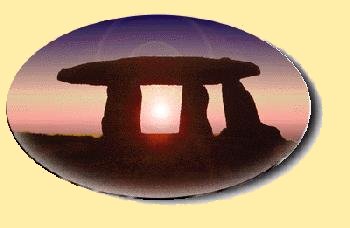
How it all began
Cornwall has always been remote from the rest of Britain, but strategically placed for trade, and with trade came new ideas, new religions. The early saints and other free-thinkers passed through Cornwall en route between Europe and Ireland. You can see traces of their passage everywhere, in the shape of holy wells and weathered crosses, and in names of churches.
Not all visitors were made so welcome. Roman legions, marauding Vikings, the slaughtering armies of Wessex, Spanish raiding parties - all tried to quell the defiant Cornish Celts who, since time immemorial, attempted to fortify the vulnerable coastline. Cliff forts of the Iron and Bronze Age still survive - and indeed, Cornwall's wealth of prehistoric monuments, including stone circles as old as Stonehenge, is the greatest in mainland Britain.
It took the Normans to rationalise the situation. They built with awesome majesty. and they built to last. Most notably, they built Tintagel Castle on the remains of a Dark Age palace which, according to the 12th century Geoffrey of Monmouth, was the birthplace of King Arthur. Henry VIII was no slouch, either. Mindful of his relationship with the Pope, he built the new-fangled twin castles of Pendennis and St. Mawes, whose guns spanned the River Fal, protecting its havens for shipping.
The Civil War enabled the Cornish, for a while, to retake lost ground. Strongly for the King, they seized Plymouth, Taunton and even Bristol - feats of arms for which Charles I thanked them with a Royal decree posted in every parish church. Many of the great houses, homes of Cornish gentry both Royalist and Parliamentarian, are still standing - Lanhydrock and Prideaux Place, Godolphin, Pencarrow and the island fortress of St. Michael's Mount.
More eloquent still are the derelict mines and engine houses which bestride the landscape from Land's End to Gunnislake. These mute witnesses are testimony to a time when the hills echoed to the din of a mining industry which once dominated the tin and copper markets of the world, driven by engineering giants of Trevithick, Davy and others. A rich history indeed.
Cornwall Tourist Board Ancient Sites in Cornwall Cornish Castles